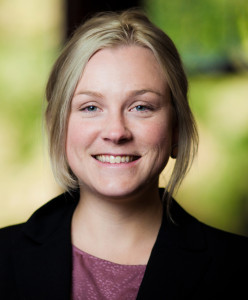By Kirstin Lindstrom for EDRblog.com.
With a not-insignificant modicum of success, a recent sea change in public, industry and non-profit collaborative efforts on public land issues has altered the atmosphere of environmental dispute discourse. Despite some notable failures, in the past few years there have been important advances in the public/private collaborative realm. Many collaborations dealing with public lands have been extraordinarily successful. (See, in particular, publications on Nine Mile Canyon and discussions over recent success in Daggett County, Utah.) However, most of the time public land disputes that are successfully addressed revolve around development in sparsely populated areas where artifact preservation, recreation access and wildlife concerns are the biggest issues. Though not to suggest that common ground is always easy to find, it is definitely easier when the contentious issues have minimal immediate impact on public health and property values. Industry interests have learned that consulting the public early on in a project’s life has benefits. Further, interest groups have come to understand that the more extreme their positions, the less likely they are to be invited to discuss alternatives to projects with environmental impacts.
So what happens when the contentious environmental issue at stake is fracking, quite literally, in your backyard? When it comes to oil and gas extraction within and around city limits, is the same kind of feel-good consensus achievable? In this case, it seems you rally either for industry or against it; rarely do those two camps coalesce or find any muddled middle ground.
When dealing with fracking in cities and suburbs, the desire to accommodate industrial interests is more elusive. More citizens are considering ballot initiatives to completely ban fracking within their states, a direct response to the possibility of rigs encroaching on dense residential areas.
In Colorado, after removing several ballot initiatives that would have both hindered and facilitated fracking in and around Denver, Governor John Hickenlooper created a taskforce of residents, industry representatives and government leaders to address citizen concerns. They recently voted upon and presented a series of suggestions for managing drilling in and around populated areas, which most seem to agree did not do enough to appease all people involved.
We must give industry representatives kudos for not disregarding public opinion. If anything was learned from recent successes on collaboration over public land, it is that dialogue between industry and concerned citizens helps. Anadarko and ConocoPhillips, both of whom have leased thousands of acres in the Denver basin, have established dedicated community coalitions to inform potentially impacted communities of the process behind fracking, its environmental impact and to address concerns before they become litigated problems. But are these coalitions enough to discourage lawsuits and ballot initiatives from concerned citizens?
 With billions of dollars, leases and existing infrastructure at stake, a complete ban on oil and gas development doesn’t seem likely. On the other hand, there appears to be a growing number of Colorado citizens who are able (if not quite ready) to use any means available to try to stop fracking altogether. While it is nice to think that the collaborative process can work in this situation, the issues are much more personal, therefore harder to negotiate. It will be interesting to see the effects of Governor Hickenlooper’s task force over the next year or so. Watch this site for more posts on fracking in Colorado as the issue develops.
With billions of dollars, leases and existing infrastructure at stake, a complete ban on oil and gas development doesn’t seem likely. On the other hand, there appears to be a growing number of Colorado citizens who are able (if not quite ready) to use any means available to try to stop fracking altogether. While it is nice to think that the collaborative process can work in this situation, the issues are much more personal, therefore harder to negotiate. It will be interesting to see the effects of Governor Hickenlooper’s task force over the next year or so. Watch this site for more posts on fracking in Colorado as the issue develops.
Kirstin Lindstrom is a title attorney living in Salt Lake City who is interested in contentious environmental issues and public discourse.
